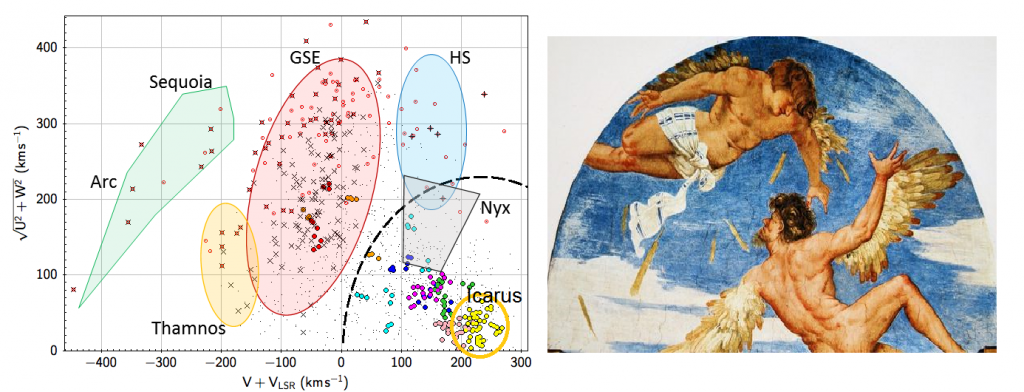by Paola Re Fiorentin
Icarus is the name of an accreted dwarf galaxy discovered in the Galactic disk by Paola Re Fiorentin, Alessandro Spagna and Mario G. Lattanzi, researchers at the Astrophysical Observatory of Turin, in collaboration with Michele Cignoni of the University of Pisa.

Paola Re Fiorentin, Ricercatrice INAF-OATo
Read the paper on ArXiv: “Icarus: a Flat and Fast Prograde Stellar Stream in the Milky Way disk” by Paola Re Fiorentin, Alessandro Spagna, Mario G. Lattanzi, and Michele Cignoni. ApJL, in press
Read the paper on ApJL: Re Fiorentin et al. 2021, ApJL, 907, L16
Read the MEDIA INAF Press release (in Italian): Icarus, la galassia che osò troppo

Left: Icarus among other known streams and stars belonging to the local halo, within a sphere of 2.5 kpc centered at the Sun, in the velocity space of the Toomre diagram. Right: The fall of Icarus, fresco by Sebastiano Luciani known as del Piombo (1511), in the Loggia di Galatea of the Villa Farnesina in Rome. Credits: Re Fiorentin et al. 2020 / Lucco M., L’opera completa di Sebastiano del Piombo, Milano 1980, tav. XIX A
